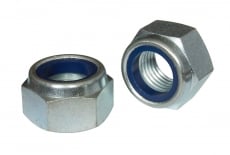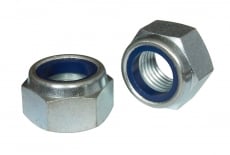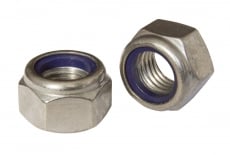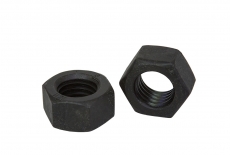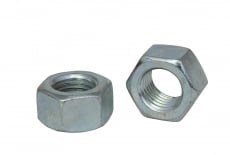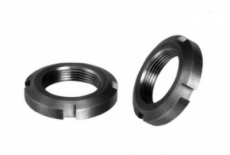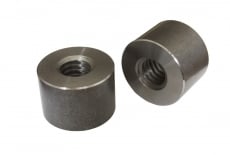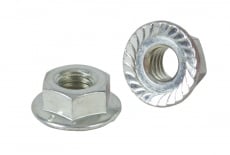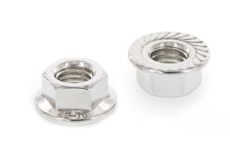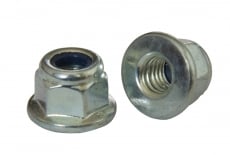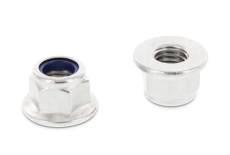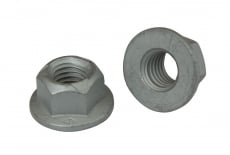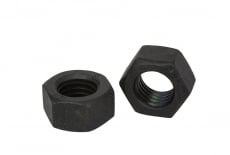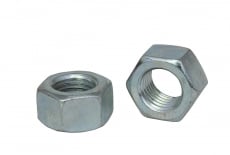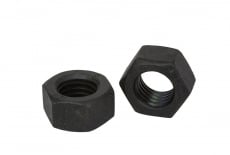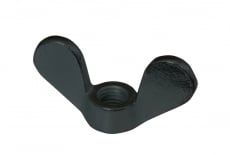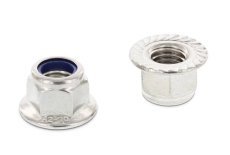| Nuts are at first glance simple, but extremely important elements in any engineering system or structure. Their main task is to provide a reliable threaded connection with a bolt, screw or stud that can withstand mechanical stress, vibration, pressure, and in many cases even temperature or chemical effects. All nuts perform the function of fixation, but differ from each other in design, purpose and technical characteristics. Each type has its own field of application, and the choice of the appropriate nut directly affects the reliability of the entire structure. | 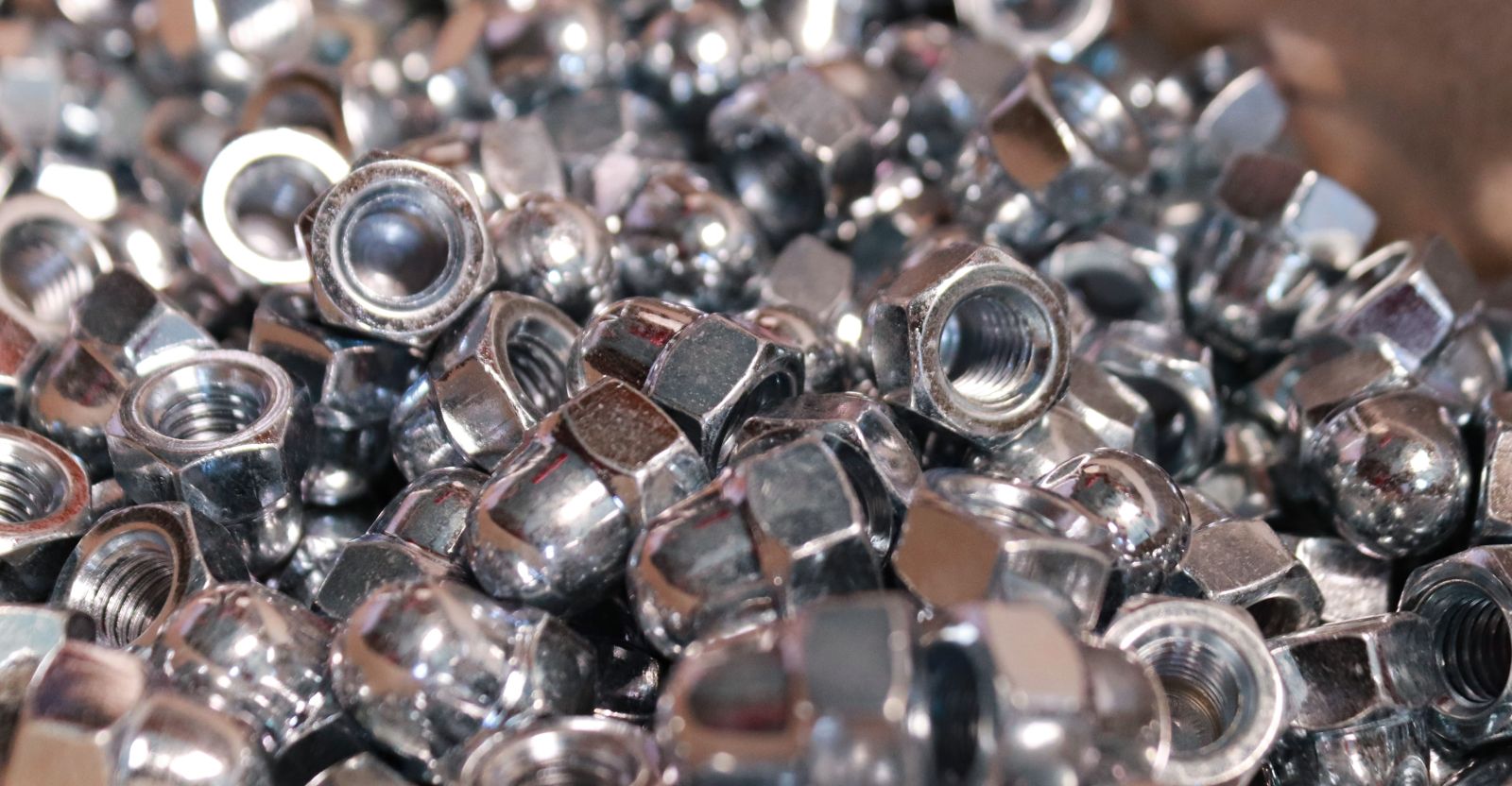 |
Types of nuts according to design parameters
In the technical environment, the correct classification of nuts by structural features is of crucial importance. After all, it is the design that affects the operational characteristics: from the ability to withstand the load to compatibility with specific bolts, studs or threaded connections. Competent understanding of these parameters allows engineers to avoid critical errors in calculations, installation and subsequent functioning of nodes and to correctly select hardware based on existing types of nuts.
Nuts by height
Types of nuts pare divided into several main types. Short (low) nuts are characterized by a minimum height and are mostly used as locknuts or in lightly loaded connections. Their design allows you to save space, reducing the weight of the attachment, which is relevant for compact and light mechanisms. Standard nuts are a universal type that is most often used in domestic and industrial structures. They provide a reliable connection, are convenient to install and have an optimal ratio of height to thread. High the nuts have an increased body height, which allows them to withstand much greater loads. They provide an extended area of contact with the thread of the bolt, and therefore - increased resistance to vibrations, dynamic fluctuations and shear loads.
Nuts by shape
Hexagonal nuts are the most common option, suitable for most standard tools. They provide ease of assembly and disassembly, high strength and versatility in use. Caps nuts have a closed top, which allows you to protect the bolt or stud from corrosion, contamination or mechanical damage. They are often used in visible or open design elements, where not only functionality is important, but also aesthetics. Flanged nuts have a built-in washer on the base, which allows for better distribution of pressure on the surface on which tightening is carried out. They prevent damage to the base, especially in soft materials, and reduce the possibility of scrolling. Round and rectangular nuts are used in specialized assemblies and fasteners, in particular in systems with limited access or where a non-standard form of connection is required.
Manufacturing materials
Manufacturing materials directly affect their resistance to external factors and loads. Steel — the most accessible and versatile material used in most general industrial applications. Depending on the grade of steel, nuts can have different strength classes. Stainless steel ideal for wet, marine or chemically aggressive environments. It has high corrosion resistance and is used in the food, medical, and pharmaceutical industries. Brass due to its chemical inertness and resistance to rust, it is often used in electrical engineering, plumbing connections and decorative elements. Polymers (in particular, polyamide, fluoroplastic) are light, dielectric and chemically resistant materials used in medical equipment, food machines, non-sparking environments.
Type of coverage
Coating types provide additional protection and increase durability.
The main types of coverage include the following: Zinc with passivation (electrolytic galvanizing) or so-called sheet zinc is a coating that is applied electrolytically. The thickness of the layer is usually smaller than that of hot-dip galvanizing, but the aesthetics are much better — the surface is shiny, even, with the possibility of color passivation (white, blue, yellow, black). Such nuts are used in interior spaces, switchboard equipment, light structures, where the appearance and accuracy of the thread are important. Dacrometis a modern electroless coating based on zinc and aluminum, with the addition of chemical corrosion inhibitors. Nuts processed in this way have a silver-gray color and a very high resistance to salt solutions, acids and temperatures up to 300 °C. They are especially popular in the automotive industry, aviation, energy, where protection is required without the formation of a galvanic vapor (for example, with aluminum). Thermodiffusion coatings (galvanizing by the diffusion method) involve the interaction of zinc with steel at a high temperature without a melt. This creates a diffusion zone at the molecular level where the zinc literally grows into the surface of the metal. This coating does not peel off, does not crack, is ideal for nuts working under the influence of temperatures, loads and abrasive environments. Thermal diffusion coating is considered one of the most durable and provides up to 1000 hours of resistance in salt fog. Other types of coverage include nickel plating, which increases hardness and wear resistance; phosphating — to improve the adhesion of lubricating materials; chrome plating — for decorative purposes and in instrument construction; as well as polymer composite coatings that provide protection and sliding at the same time.
Presentation with technical information about types of nuts and their applications:
Special and functional nuts
In modern mechanical engineering and technical design, standard hexagon nuts are no longer a universal solution. Modern designs and types of nuts, especially those that work in difficult conditions — from high vibrations to aggressive environments — require specialized solutions. That is why there is a growing demand for functional and special nuts, which not only perform the basic function of fixation, but also provide additional stability, protection and durability of the connection.
- Welded nut is a special type of nut designed for rigid fixation on a metal surface by welding. It has protrusions, ribs or flat areas that provide reliable contact during welding. It is used in structures where the reverse side of the part is not accessible for holding the nut with a key, for example, in cases, frames, panels. Provides a strong, non-removable threaded connection that can withstand high loads and vibration.
- Self-locking nuts are among the most common among functional fasteners. Their effectiveness is based on built-in mechanisms against spontaneous unwinding: most often this is a nylon insert or elastic metal deformation. The nylon wraps tightly around the bolt, creating a frictional barrier. The metal locknut deforms during tightening, providing mechanical resistance to rotation. Such solutions are especially relevant in industries where vibration or cyclic loads are constant — aviation, transport, heavy equipment.
- Locking nuts are distinguished by rigid fixation with the help of mechanical elements - slots, cutouts, cotter pins or special locking washers. They are used in critical nodes: steering mechanisms, lifting platforms, brake systems. Here, safety comes to the fore, and the connection must remain stable regardless of vibration, shocks or changes in the direction of the load.
- Nuts with a plastic insert is a modification of self-contradictory models. They are often made of fluoroplastic or polyamide and provide a hermetic seal with a threaded element. Such nuts are used in hydraulic systems, pipelines, pneumatics, as well as in the field of electronics, where it is important to avoid leaks, short circuits or sparks.
- Anti-vibration nuts — another important class designed for operation in a vibrationally unstable environment. Their design often includes a corrugated surface, special stiffeners or built-in shock absorbers. Such elements reduce the likelihood of weakening the connection due to long-term oscillations. They are widely used in railway transport, generators, compressor stations, where the bolt has no right to loosen on its own.
- Nuts for aggressive environment or high temperature conditions are made of materials capable of withstanding mechanical, thermal and chemical loads at the same time. Among them are stainless alloys, titanium, nickel or bronze bases. In such conditions, traditional nuts quickly lose their properties, and special nuts retain stability and tightness. They are the standard in the chemical industry, oil and gas infrastructure, high pressure installations, furnaces and reactors.
- Nuts for precision instruments are high-precision products manufactured to micrometric tolerances. They have no backlash, and the shape and thread are subjected to careful quality control. Such nuts are used in equipment for optics, in medical equipment, measuring installations, where even the smallest error can cause incorrect operation of the system.
- Household and decorative nuts — a separate category that includes quick-clamping, hand-held nuts with lugs (so-called "lambs"), rivet nuts, as well as products with a coating for aesthetic purposes. They are used in furniture, household appliances, and plumbing systems. Their main advantage is ease of installation without special tools and durability in daily use.



 Nuts (17)
Nuts (17)